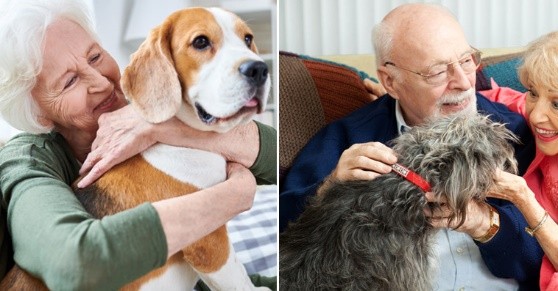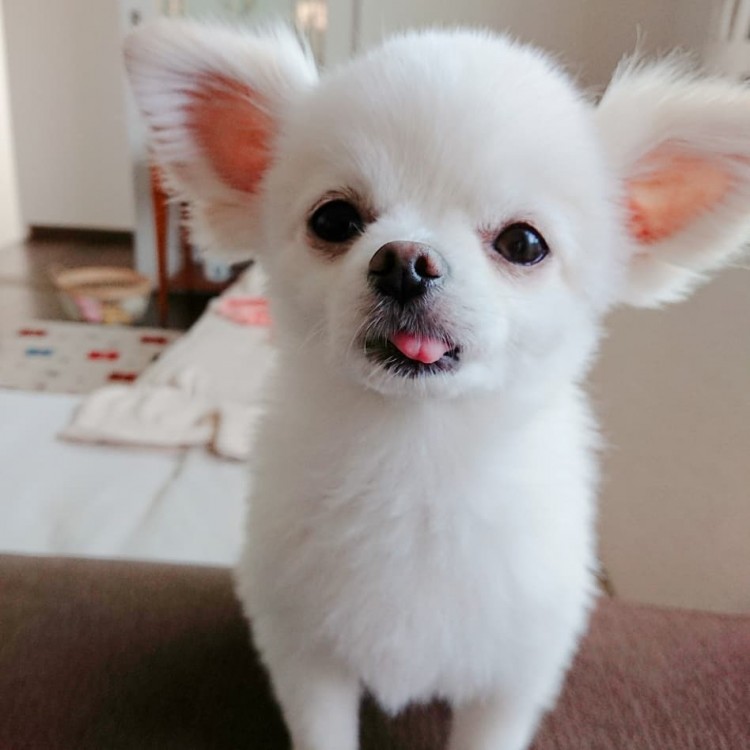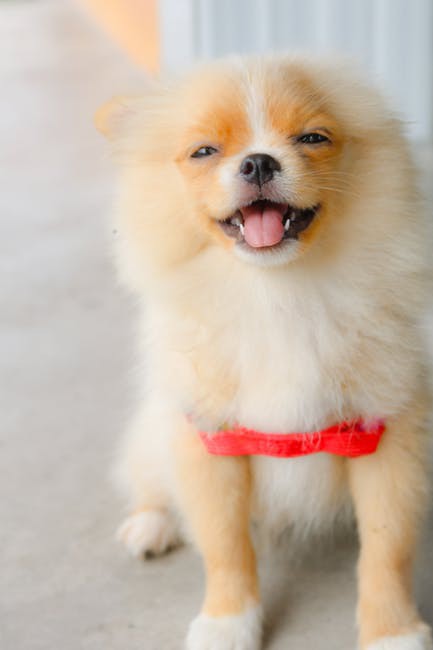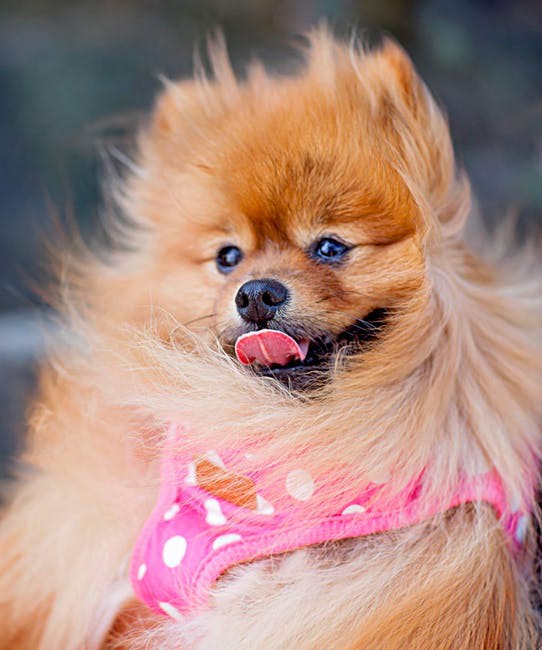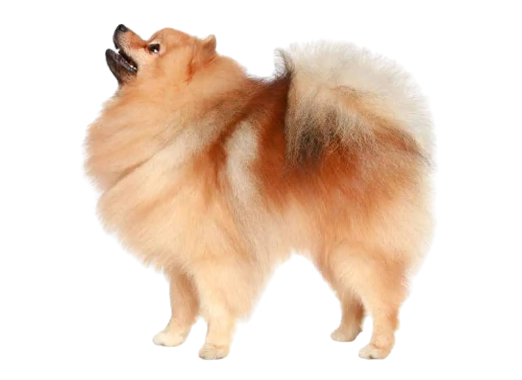
Pomeranian
USD $600-$800 Price Avg.
Companion Dogs
Group
Purebred
Breed Type
Small
Size
12-16 years
Lifespan
Breed Information
| Group | Companion Dogs |
|---|---|
| Popularity/Rank | 22 |
| Origin | Germany Poland |
| Other Names | Deutsche Spitze, Pom, Pom Pom, Spitz Enano, Spitz Nain, Zwergspitz, Zwers |
| Breed Type | Purebred |
| Price (Avg.) |
USD $600-$800
How much does a Pomeranian cost? According to a rough estimate, you will spend between $600 to $800 on your Pomeranian if you purchase it from a reputable breeder. If you select a dog with exceptional bloodlines, the price may be higher. The price might even be higher if the dog has already been trained. You'll usually pay less if you get a Pomeranian from a shelter. |
| Size | Small |
| Weight | 3-7 pounds (1-3 kg) |
| Height | 7-12 inches (18-30 cm) |
| Lifespan | 12-16 years |
| Recognized by |
AKC, FCI
The American Kennel Club in 1888 as a Toy breed. And FCI in the Spitz and primitive types group, in the European Spitz section. |
| Purpose | Companion, Working Dog |
| Date of Origin | 1800s |
| Ancestry | American Eskimo Dog, German Spitz, Norwegian Elkhound, Samoyed, Schipperke |
Appearance & Maintenance
| Coat | Fluffy |
|---|---|
| Coat Colors | Black, Blue, Brown, Gray, Orange, Red, Tan, White |
| Grooming Level | |
| Shedding Level | |
| Eye Color Possibilities | Blue, Brown |
| Nose Color Possibilities | Black, Brown, Isabella |
| Coat Color Possibilities | Black, Brown, Cream, Fawn, Gray, Red, Silver, White |
| Coat Length | Medium |
| Coat Density | Normal |
| Coat Texture | Straight |
| Recommended Brushes | Comb, Deshedder, Nail Clipper, Slicker Brush |
| Brushing Frequency | Daily |
Breed Characteristics
| Temperament | Active, Attentive, Communicable, Docile, Extroverted, Friendly, Intelligent, Lively, Playful, Productive, Sociable, Sportive, Trainable |
|---|---|
| Intelligent | |
| Trainability | |
| Playfulness | |
| Sensitivity Level | |
| Affection Level | |
| Social Interaction Required | |
| Barking | |
| Watchdog Ability | |
| Territorial | |
| Biting Force | Low |
| Mouthiness | |
| Impulse to Wander or Roam | |
| Prey Drive | |
| Adaptability | |
| Tolerates Being Left Alone | |
| Fighting Dog | Not really |
Good & Friendly with
| Apartment Life Friendly | |
|---|---|
| Stranger Friendly | |
| Kid-Friendly | |
| Cat Friendly | |
| Dog Friendly | |
| Office Friendly | No |
| Senior Citizens Friendly | |
| Pet Friendly | |
| Friendly with First Time Owners | No |
| Service Dog | Yes |
| Therapy Dog | Yes |
| Detection, Sniffer or Security Dog | Not really |
| Search and Rescue Dog (SAR) | Not really |
| Boat Dog | Not really |
| Cart Pulling or Drafting Dog | Not really |
Health Elements
| Health Issues | |
|---|---|
| Health Problems | Allergies, Cataracts, Collapsed Trachea, Dry Eye, Epilepsy, Heat Intolerance, Heatstroke, Hip Dysplasia, Hypothyroidism, Legg-perthes Disease, Patellar Luxation, Patent Ductus Arteriosis, Sei |
| Hypoallergenic | No |
| Energy Level | |
| Exercise Required | |
| Sleeping Required | |
| Weight Gain Potential | |
| Weather & Climate | Prefers average to cold weather conditions |
| Stinkiness | Medium |
| Drooling tendency | |
| Activity Level | Moderate |
| Rec. Walk Mileage Per Week | 5 miles |
| Minutes of Activity Per Day | 40 minutes |
Food & Costing
| Avg. Daily Food | Recommended daily amount: 1/4 to 1/2 cup of high-quality dry food a day, divided into two meals. |
|---|---|
| Cups Per Day | 1 cups |
| Daily Cost | $1.00 - $2.00 |
| Monthly Cost | $25.00 - $30.00 |
Reproducibility
| Gestation Duration | 60-64 days |
|---|---|
| How often can the Pomeranian have a litter? | Once a year. |
| Litter Size | 2-5 puppies (Once a year.) |
Description
The Pomeranian is a small, fluffy breed of dog that has become increasingly popular in recent years. With its bright eyes and friendly demeanor, it’s easy to see why this breed has become so beloved. But what exactly does the Pomeranian look like? What are its size, weight, colors, lifespan and personality? How friendly is it with other dogs, children and animals? What is its temperament and health like? And what are the benefits of having a Pomeranian as a pet?
Appearance: The Pomeranian is a small dog with a thick double coat that can come in many different colors. Its head is round with erect ears and almond-shaped eyes. It has a short muzzle and black nose. Its tail is usually carried over its back or curled up on its side.
Lifespan: The average lifespan of the Pomeranian is 12-16 years.
Size: The average size of an adult Pomeranian ranges from 6-7 inches tall at the shoulder and weighs between 3-7 pounds.
Weight: The average weight for an adult Pomeranian ranges from 3-7 pounds depending on their size.
Colors: Common coat colors for the Pomeranian include white, black, brown, cream, orange sable or wolf sable (a mix of grayish brown).
Personality: The personality of the Pomeranian can vary greatly depending on their individual traits but they are generally known to be intelligent dogs who love attention from their owners. They can be quite vocal when excited or when they want something but overall they are very loyal companions who enjoy being around people and other animals alike.
Friendliness with Other Dogs/Animals/Children: Generally speaking, the Pomeranians are very friendly towards other dogs as well as cats if raised together from puppyhood onwards; however they may not get along well with larger breeds due to their small size which could make them feel intimidated by bigger dogs or animals in general. As far as children go; these little guys tend to do great around kids if socialized properly since they have such an outgoing personality!
Temperament: The temperament of the Pom can range from calm to active depending on how much exercise it gets each day; however overall these little guys tend to be quite playful yet gentle at heart making them great family pets! They also have an independent streak which means that while they love spending time with their owners; they don’t necessarily need constant attention all day long either!
Health: Generally speaking; these little guys tend to be quite healthy overall but there are some health issues that may arise such as luxating patellas (dislocated kneecaps) which can cause lameness in one or both legs if left untreated; eye problems such as cataracts or glaucoma; heart murmurs; skin allergies etc… It’s important for potential owners to research any potential health issues before bringing home one of these furry friends so that you know what you’re getting into beforehand!
Adaptability Level & Benefits Of Having A Pom As A Pet : These little guys adapt well to most living situations whether it be apartment living or living out in the country side since they don’t require too much space due to their small size! They also make great watchdogs since they will bark when someone approaches your home but won’t bite unless provoked first making them ideal for families looking for protection without having too much aggression present within their home environment! Lastly; these little fluff balls make wonderful companions due to their loving personalities which makes them perfect lapdogs who will always want cuddles no matter where you go together!
History
The Pomeranian is a small, spitz-type dog that originated in the Pomerania region of Germany and Poland. The breed's name derives from the fact that Pomeranians were originally bred as working dogs in the region of Pomerania.
Pomeranians were first brought to England in the late 1800s, where they quickly became popular as companion dogs. Queen Victoria was particularly fond of the breed and helped to make them fashionable among the upper classes.
Pomeranians nearly became extinct during World War II, as many were killed or taken by soldiers. However, the breed was saved by a few dedicated fanciers who continued to breed them in secret. After the war, Pomeranians once again became popular, and their numbers have steadily increased since then.
The ancestry of the Pomeranian is somewhat uncertain. Some believe that they are descended from small German spitz-type dogs, while others believe they are related to the Samoyed or other Nordic breeds. However, most agree that the breed we know today originated in Germany and Poland.
The Pomeranian was officially recognized as a distinct breed by England's Kennel Club in 1870 and by America's Kennel Club in 1888. Today, they are one of the most popular companion dog breeds in both countries.




